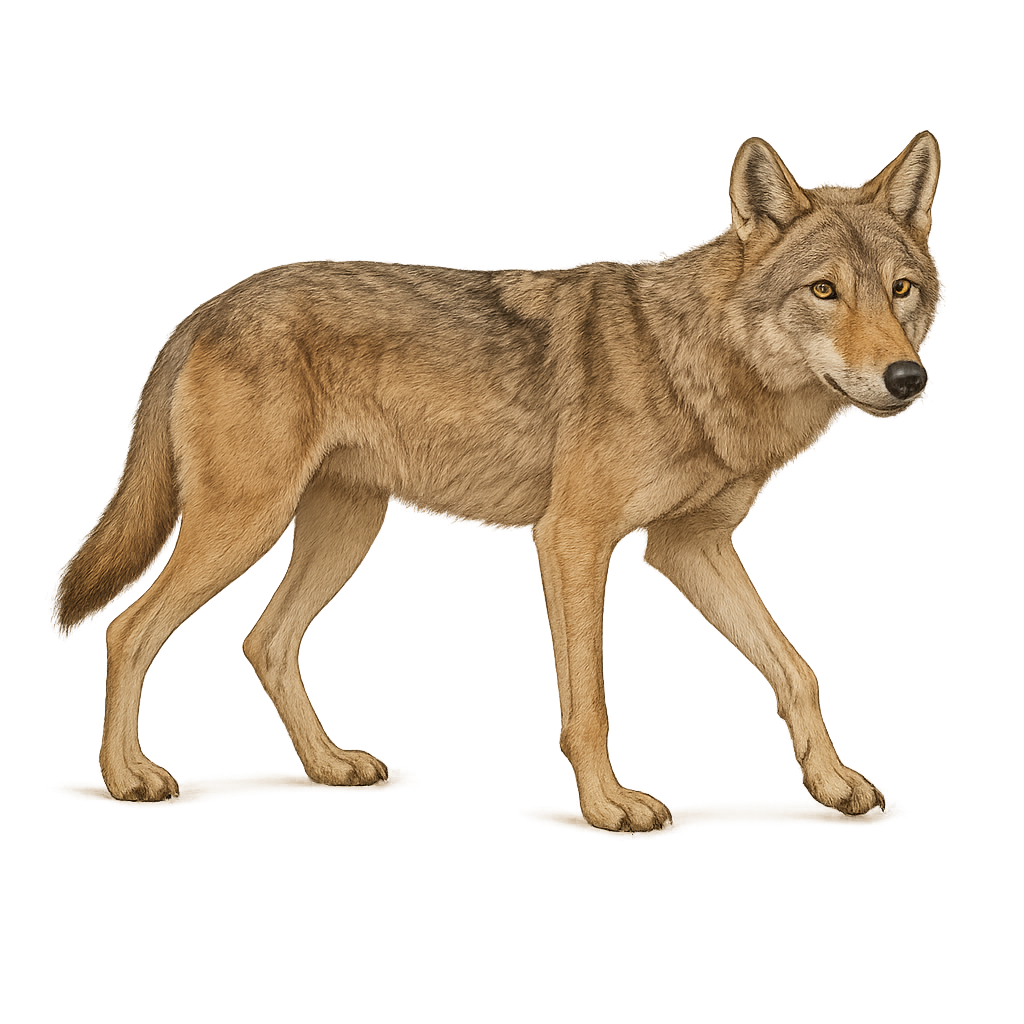Your wildlife photography guide.
Explore the indian wolf in detail, study its behavior, prepare your shots.
Where to observe and photograph the indian wolf in the wild
Learn where and when to spot the indian wolf in the wild, how to identify the species based on distinctive features, and what natural environments it inhabits. The WildlifePhotographer app offers tailored photography tips that reflect the indian wolf’s behavior, helping you capture better wildlife images. Explore the full species profile for key information including description, habitat, active periods, and approach techniques.
Indian Wolf
Scientific name: Canis lupus pallipes

IUCN Status: Near Threatened
Family: CANIDAE
Group: Mammals
Sensitivity to human approach: Suspicious
Minimum approach distance: 50 m
Rut period: January to February
Gestation: 60-63 jours
Births: March to April
Habitat:
Grasslands, dry forests, savannas
Activity period :
Mainly active at night, generally discreet during the day.
Identification and description:
The Canis lupus pallipes, commonly known as the Indian wolf, is a subspecies of the gray wolf found primarily in the semi-arid regions of India and Pakistan. This medium-sized wolf is characterized by its lighter and shorter coat, adapted to hot climates. It typically lives in small packs and preys on a variety of animals, from small mammals to birds. Although an efficient predator, it is threatened by habitat loss and human conflict. Its adaptability to various environments demonstrates its resilience, yet its population remains vulnerable.
Recommended lens:
400 mm – adjust based on distance, desired framing (portrait or habitat), and approach conditions.
Photography tips:
To photograph the Indian wolf, it is advisable to use a telephoto lens of at least 400mm to capture detailed images from a distance without disturbing the animal. The best times to observe them are early morning or late evening when activity is higher. Focus on open areas like grasslands or forest edges to maximize your chances of an encounter. Be patient and discreet, as these wolves are suspicious and can easily be startled by sudden movements or loud noises.
The WildlifePhotographer App is coming soon!
Be the first to explore the best nature spots, track rutting seasons, log your observations, and observe more wildlife.
Already 1 439 wildlife lovers subscribed worldwide

